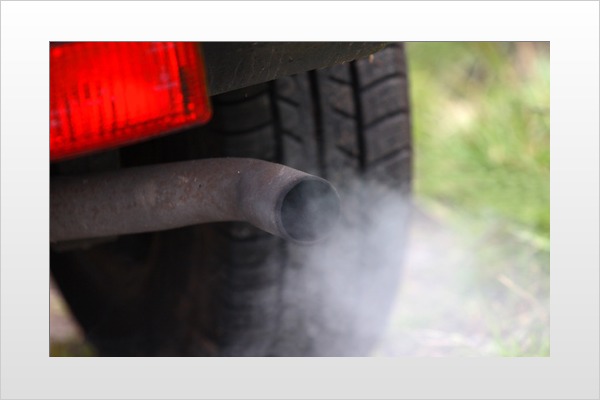
If you're confused by the alphabet soup of automotive emissions acronyms, you're not alone. The regulation of automotive tailpipe emissions is an exceedingly complex subject, rife with legal definitions, caveats and jargon.
Tier 2, CARB, EPA.... What does it mean, and how does it all work?
To better understand the acronyms, we've provided some background on the primary organizations overseeing automotive emissions regulation. We'll look at what the regulations do and do not allow in Part II.
The Background
Every passenger car and light-duty truck (SUV or pickup) sold in the United States must comply with emissions regulations set forth by the Environmental Protection Agency (EPA). This regulatory entity, established in 1970, implements federal laws intended to protect the environment.
Evolving over the course of several years, the EPA's automotive emissions regulations have been approved by Congress via amendments to the Clean Air Act. The idea behind all of these amended regulations, of course, is that tighter control over tailpipe emissions leads to cleaner air.
It appears to be working, as longtime residents of Southern California have observed — smog, while still a major problem, is nowhere near the eyeball-searing levels it was 20 years ago.
There's one large problem with the EPA's standards: They aren't the same as everyone else's standards. Japan, the European Union and the U.S. have historically enforced different regulations for automobile emissions. This worldwide disparity in regulations creates headaches for automakers attempting to produce one basic vehicle for international sale and increases the cost of bringing vehicles to market.
Today, the emissions standards in the U.S. are more stringent than anywhere else in the world, and will remain so for the foreseeable future.
Tier 1 and Tier 2
In 1990, the Clean Air Act was amended to define federal emissions standards that took full effect in model-year 1996. These were known as Tier 1 standards. The days of Tier 1 are now behind us, so let's focus on the present.
Today, Tier 2 defines the current set of federal emissions regulations. Tier 2 slashes allowable emissions to much lower levels than Tier 1, but more significantly it requires that vans, pickups and large SUVs be subject to the same emissions regulations as passenger cars.
Tier 2's phase-in period was from model years 2004-'07 for cars and trucks. Every successive model year within this period required that an additional 25 percent of an automaker's fleet be Tier 2 compliant. This phase-in period gave automakers some breathing room in meeting the regulations. Technologically speaking, it's easier to step into a lukewarm shower and gradually turn up the heat versus jumping right into a scalding spray.
The rules and regulations surrounding the phase-in period of Tier 2 are hugely convoluted. Basically, all vehicles up to 8,500 pounds GVWR (Gross Vehicle Weight Rating) are now subject to Tier 2 standards, which are "fuel neutral," meaning the standards are the same whether a vehicle uses gasoline, diesel or any other fuel.
The next step in emissions regulation will no doubt be referred to as Tier 3, though no details have yet been announced by the EPA. So from now until the foreseeable future, Tier 2 is the emissions standard that all cars must meet.
Individual States Can Enforce California's Standards
As the acting federal authority, the EPA lays down the law, literally, on any type of emissions standards in the U.S. The Clean Air Act has provisions that allow California to implement its own automotive emissions standards and other states to adopt California's standards at their own discretion.
You've probably heard the expression "California emissions." This is simply shorthand for the state standards defined by California's Air Resources Board (CARB).
Today, CARB's level of enforcement, known as LEV (Low-Emission Vehicle) 2, makes the EPA's standard look like an easy Sunday drive.
Ever notice that certain vehicles are not available in all states? LEV 2 is almost always the reason. Automakers must comply with LEV 2 if they wish to sell vehicles in those states that have adopted CARB's LEV 2 standards as their own. Maine, Massachusetts, New York and Vermont are among the states that have done so. By 2009, a total of 11 states (including California) will have followed suit.
Which Emissions Are Regulated?
No matter the vehicle type, Tier 2 regulates the emissions of five tailpipe pollutants:
On April 2, 2007, Congress ruled that greenhouse gases are considered pollutants and as such the EPA has the authority to regulate them. The ruling is recent enough that the EPA hasn't yet put forth any proposals pertaining to greenhouse gas regulation.
Summary
At a minimum, all automakers must comply with the EPA's Tier 2 emissions standards if they want to sell new cars or SUVs in the U.S. Certain states take this a step further and demand that the cars meet an even tighter standard known as CARB LEV 2.
In Part II, we'll describe the nuts and bolts of Tier 2 and LEV 2 in more detail.